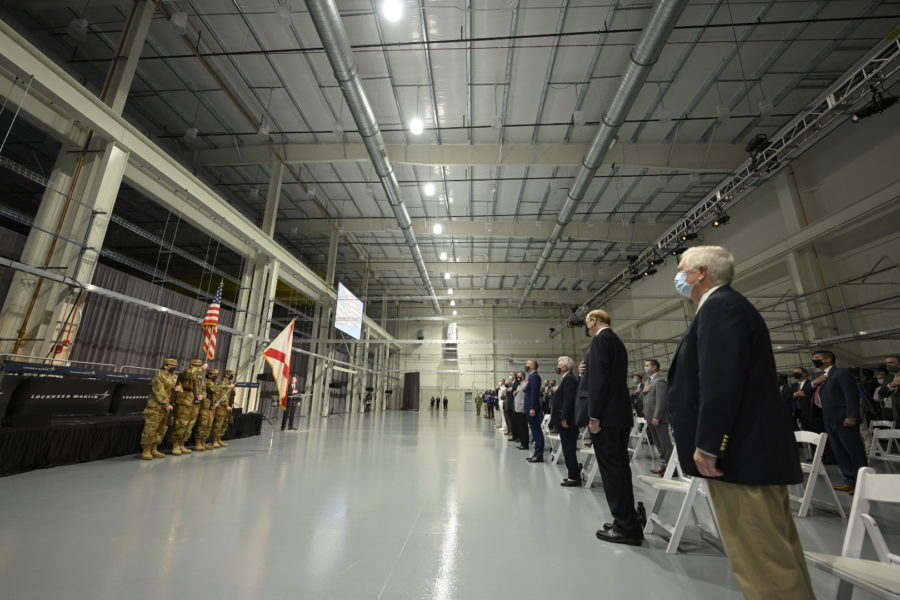Lockheed Martin opened a new “smart” factory in Alabama where the Air Force’s AGM-183A Air-launched Rapid Response Weapon (ARRW) will be manufactured, along with hypersonic systems for the Army and Navy, the company announced Oct. 4. The opening of the factory is noteworthy in that the ARRW has yet to make a successful flight.
The 65,000-square-foot facility, to be called Missile Assembly Building 4 (MAB 4), in Courtland, Ala., will also be used to build the Army’s Long Range Hypersonic Weapon and the Navy’s Conventional Prompt Strike (CPS) missile, Lockheed Martin said in a press release. Those two systems have major components in common, including the hypersonic glide body vehicle itself. The Air Force was also a partner on that project—under the name Hypersonic Conventional Strike Weapon, or HCSW—until it decided to pursue the ARRW exclusively in February 2020.
The move “represents Lockheed Martin’s commitment to establishing northern Alabama as the base of the company’s hypersonic strike programs,” the company said. MAB 4 is actually the second facility at the site for building the CPS.
Air Force leaders at AFA’s Air, Space & Cyber Conference in September said a root cause analysis of the ARRW’s failure in a July test is still underway. The missile was originally to fly before the end of 2020 but has only succeeded in captive-carry tests so far. Getting the missile into production by the end of fiscal 2022, as the service has long planned, will require a “quick resolution” to the July failure and two successful flight tests, USAF’s program executive officer for weapons Brig. Gen. Heath A. Collins said in August.
If the root cause analysis is “prolonged” or drives an “excessive … redesign” it will affect the Air Force’s ability to make the next test window, Collins said at an Air Force Life Cycle Industry Days program. The Air Force has requested $161 million in the fiscal 2022 budget for 12 missiles. The cause of an April 2021 ARRW failure is understood and was corrected, and it did not manifest in the August re-attempt, Collins said.
He also said that if ARRW proves unworkable, “we can always go back to HCSW.”

The new facility is one of four “intelligent factory” sites Lockheed Martin is opening this year. In August, it opened one at its “Skunk Works” advanced development unit in Palmdale, Calif., for manufacture of secret prototype and operational systems, presumably unmanned vehicles, and the Air Force’s new Next Generation Air Dominance system. Skunk Works head Jeff A. Babione told reporters at the opening ceremony that Lockheed Martin will build the initial examples of ARRW at Palmdale then hand off production to the company’s Missiles and Fire Control unit in Alabama.
The MAB 4 “integrates critical digital transformation advancements, such as robotic thermal protection application capabilities; smart torque tools and mixed-reality capabilities for training and virtual inspection,” the company said. It will link digitally with the other new facilities for production and other activities “to enable unprecedented insights into the health, status, and optimization of operations.”
Lockheed Martin continues to “make significant investments in the development and manufacturing of hypersonic systems to counter rapidly-emerging threats from near-peer adversaries,” it said in a press release.
The company has added 117,000 square feet of manufacturing space at its Courtland plant over the past two years, and the opening of MAB 4 will add 70 jobs to the local economy, the company said. Lockheed Martin has about 2,600 employees in Alabama already. It makes the Air Force’s AGM-158 Joint Air-to-Surface Missile in Troy.
